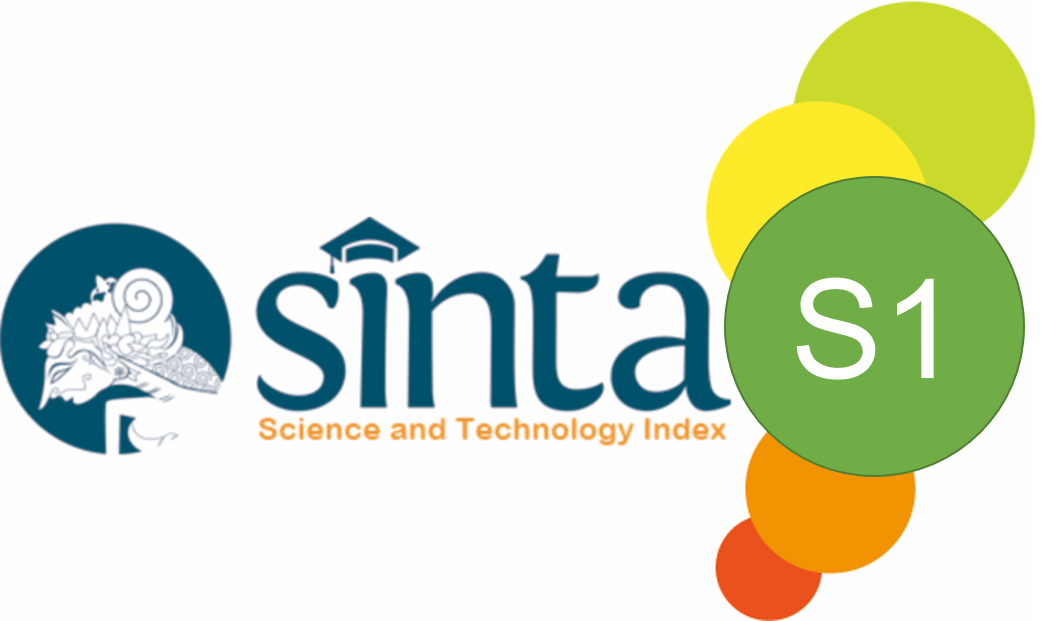Sustainable Production-Inventory Model with Multi-Material, Quality Degradation, and Probabilistic Demand: From Bibliometric Analysis to A Robust Model
Abstract
Keywords
Full Text:
PDFReferences
Alptekin, D., Diyar, A., Salih, T., and Boran, F. E. (2017). A holistic and structured CPFR roadmap with an application between automotive supplier and its aftermarket customer. The International Journal of Advanced Manufacturing Technology, 91(5), 1567-1586.
Becerra, P., Mula, J., and Sanchis, R. (2021). Green supply chain quantitative models for sustainable inventory management: A review. Journal of Cleaner Production, 328(2021), 129544.
Bhattacharjee, N., and Sen, N. (2022). A sustainable production inventory model for profit maximization under optimum raw material input rate during production. Opsearch, 59(2), 667-693.
Budiman, S. D., and Rau, H. (2021). A stochastic model for developing speculation-postponement strategies and modularization concepts in the global supply chain with demand uncertainty. Computers and Industrial Engineering, 158(2022), 107392.
Chaudhuri, K. D., and Alkan, B. (2022). A hybrid extreme learning machine model with harris hawks optimisation algorithm: an optimised model for product demand forecasting applications. Applied Intelligence, 52(2022), 11489–11505.
Danese, P. (2006). Collaboration forms, information and communication technologies, and coordination mechanisms in CPFR. International Journal of Production Research, 44(16), 3207-3226.
De-la-Cruz-Márquez, C. G., Cárdenas-Barrón, L. E., and Mandal, B. (2021). An inventory model for growing items with imperfect quality when the demand is price sensitive under carbon emissions and shortages. Mathematical Problems in Engineering, 2021(1), 6649048.
Dev, K., Maddikunta, P. K. R., Gadekallu, T. R., Bhattacharya, S., Hegde, P., and Singh, S. (2022). Energy optimization for green communication in iot using harris hawks optimization. IEEE Transactions on Green Communications and Networking, 6(2), 685-694.
Fang, C., Liu, X., Pardalos, P. M., and Pei, J. (2016). Optimization for a three-stage production system in the Internet of Things: procurement, production and product recovery, and acquisition. The International Journal of Advanced Manufacturing Technology, 83(5), 689-710.
Fiorotto, D. J., Jans, R., and de Araujo, S. A. (2021). Integrated lot sizing and blending problems. Computers and Operations Research, 131(2021), 105255.
Gautam, P., Maheshwari, S., and Jaggi, C. K. (2022). Sustainable production inventory model with greening degree and dual determinants of defective items. Journal of Cleaner Production, 367(2022), 132879.
Goyal, S. K., and Deshmukh, S. (1992). Integrated procurement-production systems: A review. European Journal of Operational Research, 62(1), 1-10.
Goyal. (1977). An integrated inventory model for a single product system. Journal of the Operational Research Society, 28(3), 539-545.
Heidari, A. A., Mirjalili, S., Faris, H., Aljarah, I., Mafarja, M., and Chen, H. (2019). Harris hawks optimization: Algorithm and applications. Future Generation Computer Systems, 97(2019), 849-872.
Ho, J. C., Shalishali, M. K., Tseng, T.-L. B., and Ang, D. S. (2022). Opportunities in green supply chain management. The Coastal Business Journal, 8(1), 18-31.
Ibrahim, M. F., Mardhiyyah, Y. S., Rusdiansyah, A., Boer, M. K., and Utama, D. M. (2020). A three-phased perishable inventory simulation model with quality decrease consideration. Jurnal Ilmiah Teknik Industri, 19(2), 198-211.
Jaber, M. Y., Glock, C. H., and El Saadany, A. M. A. (2013). Supply chain coordination with emissions reduction incentives. International Journal of Production Research, 51(1), 69-82.
Jauhari, W. A. (2022). Sustainable inventory management for a closed-loop supply chain with energy usage, imperfect production, and green investment. Cleaner Logistics and Supply Chain, 4(2022), 100055.
Jauhari, W. A., Pujawan, I. N., and Suef, M. (2021). A closed-loop supply chain inventory model with stochastic demand, hybrid production, carbon emissions, and take-back incentives. Journal of Cleaner Production, 320(2021), 128835.
Jauhari, W. A., Pujawan, I. N., Suef, M., and Govindan, K. (2022). Low carbon inventory model for vendor‒buyer system with hybrid production and adjustable production rate under stochastic demand. Applied Mathematical Modelling, 108(2022), 840-868.
Jauhari, W. A., Pujawan, I. N., Wiratno, S. E., and Priyandari, Y. (2011). Integrated inventory model for single vendor–single buyer with probabilistic demand. International Journal of Operational Research, 11(2), 160-178.
Karabağ, O., and Tan, B. (2019). Purchasing, production, and sales strategies for a production system with limited capacity, fluctuating sales and purchasing prices. IISE Transactions, 51(9), 921-942.
Khara, B., Dey, J. K., and Mondal, S. K. (2020). Sustainable recycling in an imperfect production system with acceptance quality level dependent development cost and demand. Computers and Industrial Engineering, 142(2020), 106300.
Lee, S.-H., Fauza, G., Amer, Y., and Prasetyo, H. (2015). A vendor-buyer inventory model for food products based on shelf-life pricing. Operations and Supply Chain Management, 8(2), 67-73.
Liu, H., Zhang, J., Zhou, C., and Ru, Y. (2018). Optimal purchase and inventory retrieval policies for perishable seasonal agricultural products. Omega, 79(2018), 133-145.
Liu, Y., Zhang, Q., Ouyang, Z., and Huang, H.-Z. (2021). Integrated production planning and preventive maintenance scheduling for synchronized parallel machines. Reliability Engineering and System Safety, 215(2021), 107869.
Lu, C. J., Lee, T. S., Gu, M., and Yang, C. T. (2020). A multistage sustainable production–inventory model with carbon emission reduction and price-dependent demand under stackelberg game. Applied Sciences, 10(14), 4878.
Mahmood, M. H., Sultan, M., and Miyazaki, T. (2019). Significance of temperature and humidity control for agricultural products storage: overview of conventional and advanced options. International Journal of Food Engineering, 15(10), 20190063.
Mashud, A. H. M., Roy, D., Daryanto, Y., Mishra, U., and Tseng, M.-L. (2022). Sustainable production lot sizing problem: A sensitivity analysis on controlling carbon emissions through green investment. Computers and Industrial Engineering, 169(2022), 108143.
Maulana, S. K. D. B., Utama, D. M., Asrofi, M. S., Ningrum, I. S., Alba, N., Ahfa, H. A., and Zein, T. A. (2020). The capacitated sustainable EOQ models: Models considering tax emissions. Jurnal Teknik Industri, 21(1), 12-21.
Mishra, U., Wu, J.-Z., and Sarkar, B. (2020). A sustainable production-inventory model for a controllable carbon emissions rate under shortages. Journal of Cleaner Production, 256(2020), 120268.
Negri, M., Cagno, E., Colicchia, C., and Sarkis, J. (2021). Integrating sustainability and resilience in the supply chain: A systematic literature review and a research agenda. Business Strategy and the Environment, 30(7), 2858-2886.
Omar, M., and Zulkipli, H. (2018). A single-vendor multi-buyer integrated production-inventory system with stock-dependent demand. International Journal of Systems Science: Operations and Logistics, 5(3), 204-210.
Panahifar, F., Byrne, P. J., and Heavey, C. (2015). A hybrid approach to the study of CPFR implementation enablers. Production Planning and Control, 26(13), 1090-1109.
Park, K. S. (1983). An integrated production-inventory model for decaying raw materials. International Journal of Systems Science, 14(7), 801-806.
Pattnaik, S., Nayak, M. M., Abbate, S., and Centobelli, P. (2021). Recent trends in sustainable inventory models: A literature review. Sustainability, 13(21), 11756.
Rong, A., Akkerman, R., and Grunow, M. (2011). An optimization approach for managing fresh food quality throughout the supply chain. International Journal of Production Economics, 131(1), 421-429.
Sadeghi, J., Mousavi, S. M., Niaki, S. T. A., and Sadeghi, S. (2013). Optimizing a multi-vendor multi-retailer vendor managed inventory problem: Two tuned meta-heuristic algorithms. Knowledge-Based Systems, 50(2013), 159-170.
Sadeghi, J., Sadeghi, A., and Saidi Mehrabad, M. (2011). A parameter-tuned genetic algorithm for vendor managed inventory model for a case single-vendor single-retailer with multi-product and multi-constraint. Journal of Optimization in Industrial Engineering, 5(39), 57-67.
Sarkar, B., Shaw, B. K., Kim, T., Sarkar, M., and Shin, D. (2017). An integrated inventory model with variable transportation cost, two-stage inspection, and defective items. Journal of Industrial and Management Optimization, 13(4), 1975.
Shafiee, F., Kazemi, A., Chaghooshi, A. J., Sazvar, Z., and Mahdiraji, H. A. (2021). A robust multi-objective optimization model for inventory and production management with environmental and social consideration: A real case of dairy industry. Journal of Cleaner Production, 294(2021), 126230.
Shehab, M., Mashal, I., Momani, Z., Shambour, M. K. Y., Al-Badareen, A., Al-Dabet, S., Bataina, N., Alsoud, A. R., and Abualigah, L. (2022). Harris hawks optimization algorithm: Variants and applications. Archives of Computational Methods in Engineering, 29(7), 5579-5603.
Shekarian, E., Ijadi, B., Zare, A., and Majava, J. (2022). Sustainable supply chain management: A comprehensive systematic review of industrial practices. Sustainability, 14(13), 7892.
Silva-Aravena, F., Ceballos-Fuentealba, I., and Álvarez-Miranda, E. (2020). Inventory management at a Chilean hospital pharmacy: Case study of a dynamic decision-aid tool. Mathematics, 8(11), 1962.
Taghikhah, F., Voinov, A., and Shukla, N. (2019). Extending the supply chain to address sustainability. Journal of Cleaner Production, 229(2019), 652-666.
Taleizadeh, A. A., Niaki, S. T. A., Shafii, N., Meibodi, R. G., and Jabbarzadeh, A. (2010). A particle swarm optimization approach for constraint joint single buyer-single vendor inventory problem with changeable lead time and (r, Q) policy in supply chain. The International Journal of Advanced Manufacturing Technology, 51(9), 1209-1223.
Ullah, M., Asghar, I., Zahid, M., Omair, M., AlArjani, A., and Sarkar, B. (2021). Ramification of remanufacturing in a sustainable three-echelon closed-loop supply chain management for returnable products. Journal of Cleaner Production, 290(2021), 125609.
Utama, D. M., and Widodo, D. S. (2021). An energy-efficient flow shop scheduling using hybrid Harris hawks optimization. Bulletin of Electrical Engineering and Informatics, 10(3), 1154-1163.
Utama, D. M., Dewi, S. K., and Maulana, S. K. D. B. (2022a). Optimization of joint economic lot size model for vendor-buyer with exponential quality degradation and transportation by chimp optimization algorithm. Complexity, 2022(1), 9619530.
Utama, D. M., Maulana, S. K. D. B., Baroto, T., and Dewi, S. K. (2022b). Optimizing vendor-buyer inventory model with exponential quality degradation for food product using grey wolf optimizer. International Journal on Food System Dynamics, 13(2), 225-246.
Wang, Q., Wu, J., Zhao, N., and Zhu, Q. (2019). Inventory control and supply chain management: A green growth perspective. Resources, Conservation and Recycling, 145(2019), 78-85.
Wangsa, I. (2017). Greenhouse gas penalty and incentive policies for a joint economic lot size model with industrial and transport emissions. International Journal of Industrial Engineering Computations, 8(4), 453-480.
Wangsa, I. D., and Wee, H. M. (2018). An integrated vendor–buyer inventory model with transportation cost and stochastic demand. International Journal of Systems Science: Operations and Logistics, 5(4), 295-309.
Wangsa, I. D., Tiwari, S., Wee, H. M., and Reong, S. (2020). A sustainable vendor-buyer inventory system considering transportation, loading and unloading activities. Journal of Cleaner Production, 271(2020), 122120.
DOI: https://doi.org/10.17509/ijost.v8i2.54056
Refbacks
- There are currently no refbacks.
Copyright (c) 2023 Universitas Pendidikan Indonesia

This work is licensed under a Creative Commons Attribution-ShareAlike 4.0 International License.
Indonesian Journal of Science and Technology is published by UPI.
View My Stats





















